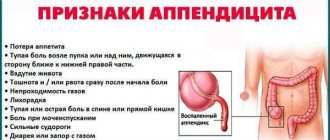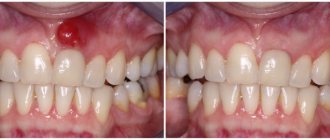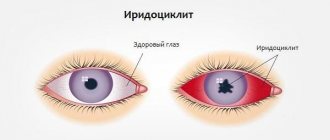Inflammation of the uterine appendages on both sides is called bilateral adnexitis. It occupies one of the first places among inflammatory diseases of the upper reproductive system. A disease that affects the appendages can lead to infertility and severe purulent-septic complications. How to recognize the symptoms and how to treat bilateral salpingoophoritis?
Causes of chronic adnexitis
The fallopian tubes originate in the upper corners of the uterus and go towards the lateral areas of the pelvis. Their length can reach 12 cm, and their thickness is 0.5 cm. Anatomically, they are divided into the funnel, ampullary part, isthmus and uterine part. They differ in width. The other side of the fallopian tubes reaches the ovaries. The mature follicle moves along them into the uterine cavity.
The ovaries are paired sex glands that are located on the sides of the uterus and perform very important functions in a woman’s body. The size of these organs can reach up to 5 cm in length and up to 3 cm in width.
In the chronic form of the disease, women often experience disorders of the digestive system. The kidneys and bladder may also be involved.
Inflammation begins from the mucous membrane of the fallopian tube, gradually spreading to the muscular and serous membrane, and subsequently to the epithelium of the ovary. Organs become swollen, and blood circulation in them worsens.
As a rule, the clinical picture of this disease is erased. Exacerbation of chronic adnexitis most often occurs in spring or autumn.
Bacterial infections can cause accumulations of pus in the tubes, which leads to their thickening and the development of adhesions, as a result of which patency worsens and infertility develops.
In most cases, the cause of the inflammatory process is pathogenic microorganisms. Infection can enter the affected area in the following ways:
- hematogenous - through blood vessels from other organs;
- lymphogenous – through lymphatic vessels;
- ascending - from the vagina and uterus;
- descending - from the abdominal cavity.
The most common pathogens of the disease include sexually transmitted infections:
- trichomoniasis;
- chlamydia;
- gonorrhea;
- genital herpes;
- cytomegalovirus;
- papillomavirus.
Each sexually transmitted infection that causes the development of chronic adnexitis has its own characteristics:
- pathogenic viruses or bacteria that are sexually transmitted - most often bilateral chronic adnexitis develops;
- gonococcal infection - can provoke the occurrence of purulent adnexitis;
- chlamydia - most often causes adhesions.
Factors that influence the development of the disease:
- Immune system dysfunction. The cause of this may be autoimmune diseases, chronic inflammatory processes, endocrine diseases, and malignant neoplasms.
- Other chronic diseases of the genitourinary system.
- Violations of personal hygiene rules.
- Abortion. The greatest damage to the mucous membrane occurs during curettage. In this case, even the muscle layer can be damaged. Subsequently, the affected areas become overgrown with connective tissue, and blood circulation in this area is disrupted, which reduces resistance to infections.
- Birth injuries of mucous membranes. The ruptures that appear as the child passes through the birth canal also contribute to impaired blood circulation in the pelvic organs, which causes a decrease in local immunity.
- Presence of intrauterine devices. They are often perceived by the body as foreign bodies, so reactions are triggered that contribute to a decrease in local immunity. When inserting or removing the coil, the mucous membrane may be damaged, which allows infection to quickly penetrate inside.
- Diagnostic manipulations.
- Promiscuous sex life.
Diagnostic measures
A focus of chronic inflammation limited by adhesions in the left appendages of the uterus must be treated: with what and how - depends on the results of the following diagnostic studies:
- bacterial cultures from the vagina and endocervix;
- PCR for significant bacterial and viral infections;
- transvaginal ultrasound;
- magnetic resonance imaging (MRI is especially important in the formation of an inflammatory conglomerate of several organs of the reproductive system);
- laparoscopy.
If there is any doubt about the diagnosis or detection of an inflammatory tumor in the left uterine appendages, it is necessary to perform diagnostic laparoscopy. This is especially important for women planning a pregnancy: a source of chronic infection can become the main cause of infertility, ectopic pregnancy or spontaneous miscarriage.
Symptoms of chronic adnexitis
Symptoms of chronic adnexitis:
- Pain in the lower abdomen. In the chronic form of the disease, it can be irregular, aching, dull, worsening after physical activity, sexual intercourse or during urination. Pain may radiate to the rectum or lower back. In some cases, the pain intensifies in the middle of the cycle or before the start of menstruation.
- Increased body temperature. In most cases it does not exceed 37.5 °C. This disorder can occur at certain hours and then go away on its own. With chronic adnexitis caused by chlamydia, the temperature does not rise.
- Discharge. This symptom depends on the causative agent of the disease and the stage of the inflammatory process. Leucorrhoea can be mucous, purulent, yellowish or greenish. In some cases they have an unpleasant odor. Discharge may be absent or appear periodically during exacerbation of the disease.
- Menstrual irregularities. This is an integral symptom of chronic adnexitis. Menstruation becomes heavy, painful and prolonged, and a large number of clots are released. But in some cases, the amount of menstrual flow is reduced to a minimum, and the disorder is accompanied by severe pain. Also, with chronic adnexitis, cycle disturbances are often observed.
- Pain during sexual intercourse. They may be caused by inflammation of the mucous membrane of the genital organs.
- Decreased sexual desire. With chronic adnexitis, the functions of the ovaries are disrupted, resulting in the production of an insufficient amount of hormones responsible for sexual desire.
- Reproductive dysfunction. Adhesions formed as a result of inflammation close the lumen of the tube. This causes the egg to not reach the fundus of the uterus. As a result, a woman who does not use protection during sexual intercourse cannot become pregnant.
In the chronic form of the disease, women often experience disorders of the digestive system. The kidneys and bladder may also be involved. Patients with chronic adnexitis feel worse, they experience weakness, become lethargic and irritable.
With exacerbation of chronic adnexitis, the following symptoms may occur:
- Deterioration in health.
- Increase in body temperature to 38 °C.
- Pain in the lower abdomen, radiating to the back or anus. The pain can be constant and quite intense.
- Purulent vaginal discharge.
During surgery, the affected tube can be removed or adhesions that cause its obstruction can be eliminated.
Acute form
Treatment of acute inflammation of the appendages is carried out strictly in a hospital setting, under the close supervision of medical staff (staying in the hospital can take 1 month). The woman must be on bed rest and a special diet. At the same time, a heating pad with ice should be applied to the lower abdomen about 4 times a day.
In cases of severe inflammation, antibiotics of priority groups are used:
- penicillins and their combinations;
- tetracyclines;
- II and III generation cephalosporins;
- aminoglycosides (kanamycin, amikacin and gentamicin). The negative effect of these medications on the auditory nerve and kidneys should be taken into account.
- a more modern method is macrolides (spiramycin, clarithromycin, azithromycin);
- fluoroquinolones (ciprofloxacin, ciprolet, etc.)
- after 5 days of antibiotic treatment, antifungal agents (nystatin, fluconazole and others) are prescribed;
- in severe cases, antibiotics are injected into the appendages themselves. The puncture is performed through the posterior vaginal fornix;
- in case of severe pain, it is advisable to prescribe painkillers - analgesics (nimesulide, analgin, etc.);
- acute salpingoophoritis is considered a serious pathology, which, if untreated, can lead to death. Therefore, intensive treatment of chronic adnexitis should be prescribed - anti-inflammatory therapy in combination with measures that reduce intoxication.
Diagnostics
In order to diagnose the disease, the gynecologist conducts an examination using mirrors and a digital examination. To confirm the diagnosis, the following instrumental studies may be prescribed:
- Ultrasound examination of the pelvic organs. It can be transabdominal (the sensor is applied to the lower abdomen) or transvaginal (the sensor is inserted into the vagina). Thickening of the walls of the fallopian tubes, anechoic contents, accumulation of fluid in the space behind the uterus and adhesions, heterogeneous structure of the ovaries and blurred contours are determined.
- Laparoscopy. A tube with a lens system (laparoscope) is inserted into the abdominal cavity through small holes under local anesthesia. Using this device, the ovaries and fallopian tubes are examined, determining the presence of inflammation, pus and adhesions.
- Metrosalpingography. A contrast agent is injected into the uterine cavity and fallopian tubes, which is monitored on x-rays. The study is necessary to check the patency of the fallopian tubes.
Laboratory research methods include:
- Bacteriological examination of a smear.
- General and biochemical blood test.
- General urine analysis.
- Smear for oncocytology.
- An examination to detect sexually transmitted infections.
Why does a one-sided focus of inflammation form?
After the acute phenomena subside, inflammation in the uterine appendages goes through several stages, forming a chronic source of infection and creating conditions for female diseases. The volume of the lesion is of great importance: when microbes penetrate beyond the fallopian tube, into the ovary and onto the peritoneum, the chances of bilateral salpingoophoritis occurring are much higher. An important factor is the speed and severity of the appearance of adhesions, which limit the area of inflammation. Chronic left-sided salpingoophoritis occurs due to the following reasons:
- acute adnexitis, which arose against the background of Escherichia and enterococci (intestinal microbes along the ascending path more often enter the left appendages);
- inflammation in the final section of the intestine (colitis, proctitis or paraproctitis) allows infection to penetrate into the left side of the woman’s reproductive organs;
- hereditary predisposition to adhesive disease (rapidly forming adhesions in the abdomen prevent the spread of microbes, limiting the disease to the left appendages of the uterus);
- absence or blockage of the right tube (with an ascending infection, microbes will cause inflammation on the left);
- gynecological diseases associated with the left side of the genital organs (left ovarian cyst, hydrosalpinx, endometrioid disease, subserous leiomyomatous node on the left half of the uterus);
- concomitant diseases (inflammation in the pancreas, left-sided pyelonephritis, hormonal disorders against the background of oophoritis on the left).
It is advisable to accurately identify the cause of inflammation on one side. This will help to carry out only the necessary diagnostic studies and begin effective therapy in a timely manner.
Treatment of chronic adnexitis
The main goal of treating chronic adnexitis is to eliminate the infection and strengthen the immune system. The following groups of drugs are prescribed:
- Antibiotics from the group of penicillins, cephalosporins, tetracyclines.
- Sulfonamides.
- Antiprotozoal agents.
- Non-steroidal anti-inflammatory drugs.
- Vitamin complexes.
- Antifungal agents.
- Immunostimulants.
- Biogenic stimulants.
Depending on the course of the disease, drugs can be prescribed in the form of tablets, intramuscular or intravenous injections or suppositories. The treatment regimen is determined by the doctor individually.
Physiotherapeutic treatment methods include:
- UHF to the area of the appendages and uterus.
- Electrophoresis with drugs.
- Ultraphonophoresis.
- Magnetotherapy.
- Radon or hydrogen sulfide gynecological irrigation.
- Plasmapheresis.
Surgical intervention for chronic adnexitis is performed in the following cases:
- tumors in the ovarian area;
- purulent formations in the appendage area;
- lack of effect of conservative treatment;
- obstruction of pipes as a result of adhesions.
Contraindications to surgery are bleeding disorders, obesity, or infectious diseases in the acute stage. The most effective and safe method is laparoscopy.
Chronic adnexitis is not life-threatening, but if left untreated, the infection can spread. In this case, the prognosis worsens - the woman develops infertility and other diseases.
In some cases, a full-fledged surgical intervention is indicated, in which the abdominal wall is dissected, which makes it possible to gain access to the pelvic organs. This method is more traumatic and often leads to the formation of new adhesions.
During surgery, the affected tube can be removed or adhesions that cause its obstruction can be eliminated.
You should immediately consult a doctor in the following cases:
- severe pain in the lower abdomen;
- purulent discharge;
- increase in body temperature to 38 °C and above;
- urinary disturbance;
- general weakness;
- bleeding;
- increased heart rate.
Prevention
There are rules that should be followed to prevent the development of adnexitis. Their points are:
- Having a permanent partner for sex.
- Competent contraception to prevent abortions, use of a condom during casual sexual contacts.
- Avoid hypothermia, nervous stress, and overwork.
- Do not wear tight underwear or clothes.
- Treatment of any acute gynecological inflammation.
- Mandatory daily washing, timely replacement of pads during menstruation.
- Visit a gynecologist at least twice a year.
A woman at any age should not neglect her health and ignore pain in the lower abdomen. Chronic adnexitis is insidious, and its complications can turn a woman into a neurotic, deprive her of the happiness of motherhood and sexual pleasure. Health to you and women's happiness!
Complications
Complications of chronic adnexitis include:
- infertility;
- lack of ovulation;
- the appearance of both benign and malignant neoplasms in the ovarian area;
- purulent melting of the pipe;
- ectopic pregnancy.
Chronic adnexitis can cause ovarian dysfunction. In this case, the ability to mature the egg is lost. Hormonal levels may also change, which negatively affects your well-being.
Bilateral adnexitis ICD
Regardless of the characteristics of the course of adnexitis, its code in ICD 10 is always the same - N70.
ICD 10 takes into account that inflammatory pathologies of the uterine appendages have their own developmental characteristics and may differ from each other. Within their classification group they are divided into separate categories. For example, the section on adnexitis with code N70 belongs to the category “Inflammatory diseases of the female pelvic organs,” which contains disease codes from N70 to N77.
Bilateral adnexitis in ICD 10 refers to the section with code N70.1 (chronic adnexitis and its varieties). This also includes unilateral inflammation of the female appendages. The presented classification makes it easier for doctors to make or clarify a diagnosis, helps interpret the disease and quickly determine its causes.
What can lead to inflammation of the appendages
The infection is caused by streptococci, staphylococci, as well as E. coli and tuberculosis, which can enter the genitals. Salpingoophoritis can be caused by a number of factors, the most common include:
Having sex during menstruation, since the female organs are very vulnerable during this period, and any infection can easily lead to an inflammatory process.
- Most often, abortion leads to adnexitis. This disease can occur both during the procedure itself and after, if you do not abstain from sexual relations for three weeks.
- Advanced vulvitis, vaginitis, as well as tuberculosis or influenza can lead to complications in the form of this disease.
- Previously transmitted venereal diseases can subsequently lead to salpingo-ophritis.
- Severe hypothermia, overwork, stress.
Not only does the disease itself bring a lot of unpleasant sensations, but its consequences are very disappointing. After all, after inflammation of the fallopian tubes, damage to the epithelium occurs and adhesions form. As a result, infertility occurs, which cannot always be cured.
Also, in women who have had adnexitis, with a probability of 15 to 50%, an ectopic pregnancy may occur. In addition, due to complications and the formation of adhesions, pus or serous fluid collects in the fallopian tube, and when it ruptures, pelvic peritonitis develops. This is a serious disease that causes not only chronic pain, but also obstruction of the fallopian tubes and intestines.
Folk remedies
Traditional medicine can provide a lot of recipes for treatment.
The most famous recipes include:
- Douching with chamomile decoction: pour 5 tablespoons of dried flowers with a glass of boiling water and let it brew for an hour. When the temperature of the broth drops to thirty-six degrees, it needs to be filtered and douching of the vagina for 10 days;
- Douching with a decoction of plantain and aloe: finely chopped plantain leaves should be poured with one hundred milliliters of boiling water and cooked over low heat for 3 minutes. Remove from heat, let stand, filter. Add twelve drops of aloe juice to the liquid. Carry out douching for 2 weeks;
- Taking infusions of Chernobyl, chamomile, sweet clover and Veronica officinalis. To make it, you need to take 5 teaspoons of all herbs, and only a teaspoon of sweet clover, and mix. From the resulting mixture, take 2 and a half tablespoons and mix with two glasses of hot water and let it sit for twenty minutes, then drink the infusion. Before the appointment you need to do an enema;
- Tampon using celandine and garlic. To make it, you need to finely mash a clove of garlic and squeeze out the juice, which should be mixed with a small amount of water and two drops of celandine. Afterwards, you need to moisten a tampon in the liquid and insert it into the vagina for 3 hours. You need to do this 2-3 times seven days before recovery.
Traditional medicine methods are suitable for treating the symptoms of the disease. Treatment with folk remedies will not eliminate the disease. Self-medication leads to infertility.
Degrees of the disease
Modern medicine presents a number of classifications of diseases.
Thus, adnexitis can be divided into several subtypes according to the degree of development of the disease:
- The first is when pathogenic microorganisms enter the appendages from the uterus, as a result of unprotected contraception, sexual intercourse with a patient with adnexitis;
- The second - can lead to the spread of inflammation to the nearest organs of the small pelvis and peritoneum, provoke inflammation of the cecum, appendicitis. At this stage, the infection spreads throughout the woman’s body through the bloodstream, through the lymphatic system, or due to direct contact of organs.
Both degrees of the disease are quite dangerous and, at the first signs of illness, it is recommended to immediately consult a doctor. In addition, it is important to exercise extreme caution when choosing a sexual partner.
Therapy for chronic inflammation
Exacerbation of chronic 2-sided adnexitis and detection of infection are indications for antibiotic therapy. In all other cases, there is no point in using antimicrobial drugs: against the background of chronic inflammation, the best therapeutic effect will be provided by drugs with the following effect:
- immunomodulatory;
- anti-inflammatory;
- absorbable and anti-adhesive;
- hormonal.
In addition to drug therapy, the doctor will prescribe:
- physiotherapy (electrophoresis, phonophoresis);
- balneotherapy (baths, vaginal irrigation, microenemas);
- mud therapy;
- aerotherapy (general and local air baths).
Only after completing the course of therapy will the doctor be able to answer the question of whether it is possible to become pregnant against the background of 2-sided chronic salpingoophoritis. When the patency of the fallopian tubes and the functions of the ovary are restored, the desired pregnancy will occur, but in the case of severe adhesions and persistent tubal obstruction, the only chance for a woman will be IVF.
Antibiotic therapy
The main therapeutic factor is antibacterial agents. The treatment regimen for acute adnexitis necessarily includes 2-3 antimicrobial drugs, which ensure the removal of infection from the woman’s genital tract. However, it should be remembered that strong antibiotics can cause the following complications:
- intestinal dysbiosis resulting from the negative effect of antibiotics on normal microbes;
- weakening of immune defense;
- active proliferation of fungal and opportunistic microflora in the vagina with the appearance of symptoms of candidiasis and bacterial vaginosis;
- antibiotic-associated diarrhea.
Typically, complications of antimicrobial therapy are associated with the following factors:
- use of 3 or more antibiotics;
- high dosages of drugs;
- long courses of treatment.
For each woman with adnexitis, the attending physician selects antibiotic therapy individually, strictly taking into account indications, contraindications and possible complications.
About the disease
Adnexitis can be left-sided, right-sided or bilateral.
With unilateral inflammation, the appendage is affected on one side of the body, and with bilateral inflammation, it affects both sides. Right-sided adnexitis can manifest itself as pain in the right side of the abdomen, inflammation of the right ovary and tube. These pains can easily be confused with appendicitis. Left-sided adnexitis is accompanied by pain on the left side and damage to the left appendage. Basically, unilateral adnexitis is caused by opportunistic flora, and bilateral adnexitis is caused by pathogenic pathogens.
Proceeding unnoticed, chronic bilateral adnexitis over time leads to persistent changes in tissues:
- The connective tissue thickens.
- The lumen of the fallopian tubes narrows.
- The tubal epithelium is damaged.
All these changes help the development of infertility, since with bilateral inflammation both tubes are damaged, making it impossible for a fertilized egg to enter the uterine cavity.
Bilateral adnexitis is characterized by thickening, enlargement and pain of the appendages on both sides, menstrual irregularities, and increased temperature.
Treatment of adnexitis begins with long-acting antibiotics (bicillins or antibiotics, cefoxitin or azithromycin). With timely and adequate treatment, the inflammation gradually subsides and adhesions resolve.
If the disease is advanced and cannot be treated with medication, then surgical treatment is used.
The operation is performed using laparoscopy. It is done for health reasons when there is an accumulation of pus or a threat of pipe rupture.
After the ultrasound, the patient is sent for surgery. Incisions are made on both sides in accordance with the scan results. Under visual control, pus is evacuated from the affected tissues, and the cavities are sanitized.
Inflammation on both sides: causative factors
An acute inflammatory process that occurs during a primary infection almost always precedes chronic adnexitis. Microbes through the vagina and cervical canal first enter the uterus and tubes, causing endometritis and salpingitis, and then spread to the appendage area.
Another common route of infection is through the blood or lymphatic vessels from any source of inflammation. For the occurrence of 2-sided salpingoophoritis, predisposing factors are of great importance:
- improper or incomplete treatment of acute inflammation in the female genital organs;
- frequent medical abortions;
- failure to comply with the rules of sexual hygiene;
- diagnostic or therapeutic interventions that disrupt local defense mechanisms;
- decreased or absent immune defense;
- long-term wearing of an intrauterine contraceptive device;
- impaired blood supply to the pelvic organs due to varicose veins;
- chronic diseases of the intestines and urinary system;
- environmental factors (frequent hypothermia, physical labor, sedentary lifestyle, poor nutrition).
An important factor in the prevention of salpingoophoritis on both sides is the maintenance of general and local immunity. In women who often suffer from respiratory infections with colpitis or chronic cervicitis, a chronic version of bilateral salpingoophoritis may appear after an uncomplicated abortion.
In this case, there will be no signs of acute inflammation: the weakened body will not be able to cope with the infection, and the manifestations of inflammation will be so minimal that the woman will not notice signs of acute salpingoophoritis.











